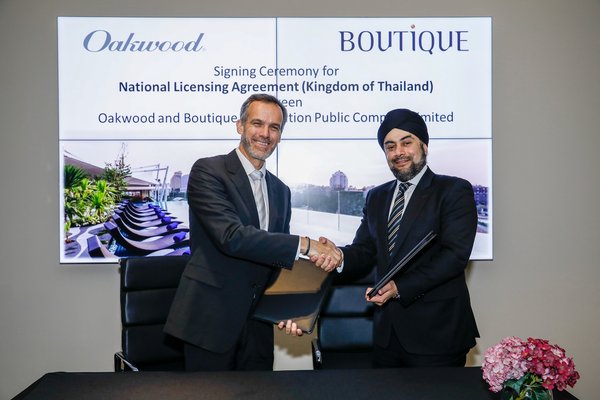Four decades of solid Thailand and China relations have almost been derailed by their failure to reach a final agreement on the construction of a high-speed train system. After nine rounds of back and forth negotiations since January 2015, Thailand surprisingly has thrown down the gauntlet.
At the end of March in Sanya, Hainan Island, during the meeting with his Chinese counterpart, Li Keqiang, Prime Minister Prayut Chan-Ocha boldly stated that Thailand would scrap the high-speed train project with China for the time being. Then, he said Thailand would go for a new railway project on its own.
Interviews with Thai and Chinese involved in the negotiations from both sides revealed different priorities and understandings over what the mammoth project meant to them. Despite their time-tested relations, they still had a lot to learn from this quite unusual experience as it encompassed political, economic and cultural dimensions.
As the railway project has manifested, from now on the paradigm of Thai-Chinese relations is shifting, becoming more complex with added strategic calculations, real or imagined.
From the very beginning, it has long been Thailand’s dream project to build a high-speed train system linking key cities inside the country, especially with Chiang Mai, Nong Khai, Nakhon Ratchasima and Hat Yai. The opportunity arrived when China wanted to expand its connectivity under the “Belt and Road” initiative, including exporting high-speed training technology and investment in infrastructure. Thailand responded with enthusiasm and wanted to be the first to harness the scheme.
Before the current military takeover, previous governments had held discussions and signed many memoranda of understanding on several proposed railway projects. However, the real work began with General Prajin Junthong, who served as Minister of Transport from May 2014 to August 2015. He was so excited that he wanted a quick realisation of the railway under his helm. So, he pushed for an early conclusion of the estimated Bt7.8-billion deal.
Earlier reports suggested the high interest rate of over 2 per cent as the main obstacle was overstated. As it turned out, the interest rate of 2 per cent asked by Thailand had been long settled. China was willing to reduce the rate and prices of other procurements. The Thai and Chinese media took different spins befitting their audience. The Thai media reports focused solely on the interest rate and stressed it as the main reason why the railway negotiations were further delayed. Meanwhile, the Chinese media reported Thailand was mainly positive – stressing the smooth negotiation and steady progress on concerned issues related to design, pricing and others. Currently, Thailand hosts the biggest Chinese media representation in Asean.
In truth, the tussles were real as both sides were adamant in their positions. Chinese ambassador to Thailand Ning Fukui and his predecessor Guan Mu expressed frustration for all to see over the long and inconclusive deal at a seminar of Thai-Chinese relations in December. They stated that the 40-year-old friendship had not helped with the negotiations, which should have been based on mutual trust for mutual benefits. However, in a cabinet reshuffle last August, Prajin was replaced by Arkhom Termpittayapaisith, a technocrat with an engineering background. Then the negotiating took a dramatic turn as Arkhom focused on aspects Prajin had neglected – such as the long-term implications to environment, design models and most important of all, the hush-hush feasibility studies on the project. These new demands caused some discomfort among the Chinese negotiators.
Like rubbing salt into the wounds, Deputy Prime Minister Somkid Jatusripitak took over Prajin’s job, overseeing economic and foreign affairs. He suddenly suggested the project should follow the Lao model using China’s investment and loan concessions.
However, the Chinese negotiators warned the Thai side, the six conditions offered to Laos would not be suitable for Thailand. China cited two examples – that Laos had agreed to include privileges of the areas under the rail track to the Chinese concessionaires. The second condition was to allow compensation in the form of mineral concessions. These conditions were specifically designed for Laos. For instance, future revenue from a bauxite mine and three potash mines in Laos would be used to secure the Chinese loan. The annual interest rate would be three per cent for the 20-year loan period with an interest-only period, that is, no repayment of principal for the first five years Then Somkid asked China to invest in the Thai high-speed train system to share any future business risks. This came as a shock to the Chinese side as it was a Thai project, not a Chinese one, even though both would benefit from this connectivity. This came after both sides held a groundbreaking ceremony on December 9 to ensure construction would start soon.
The proposed business model was a simple one – Somkid would like China as a joint owner, which China was reluctant to do. At first, Thailand went for a 70:30 ratio, with China taking the majority of the risk. Later on, it was reduced to 60:40, which still did not work. China then offered a new proposal following fresh Thai demands, streamlining the proposed construction—no more dual tracks, slower trains, shorter routes from Nong Khai to Kaengkhoi, without the Kaengkhoi to Mabtaput portion in the Gulf of Thailand. The vast price difference coming from both sides’ evaluations was also problematic because of a gap of nearly Bt2 billion.
At this point, in private, the Chinese side raised the possibility of foreign involvement, which the Thai side vehemently rejected, pointing out that Thailand’s decision was based on national interest. Prayut decided with a heavy heart to kick off the Thai railway scheme between Bangkok and Nakhon Ratchasima. At the Sanya meeting, Prayut reiterated to Premier Li that the rail connectivity must move ahead. The only way to do so, he pointed out, was for the Thai side to do it now. To appease China, Prayut promised that China would be invited to join in the second and third phases of expansion. Future funding, technology and procurements would be sought from China.
Much has been said and hailed about the excellent relationship between Thailand and China. But the truth of the matter still remains untold—their friendship is extremely fragile and unequal. Thailand still views China as a big and rich neighbour that must be willing to give away more. The common offering of “friendship prices”—so prevalent in their bilateral relations since 1970’s first offering of a friendship oil price—is still embedded in the Thai mindset, especially that of the bureaucrats. Too much is at stake in their bilateral ties, given the current regional and international strategic environment. The next scheduled meeting will be in Beijing soon. It will serve as a barometer on whether both countries have learned their lessons and tried to work anew on ways to understand changes taking place in their respective countries and foster this longstanding friendship with new perspectives.
Source: http://www.nationmultimedia.com/opinion/Sino-Thai-railway-negotiations-on-a-rickety-track-30285092.html


